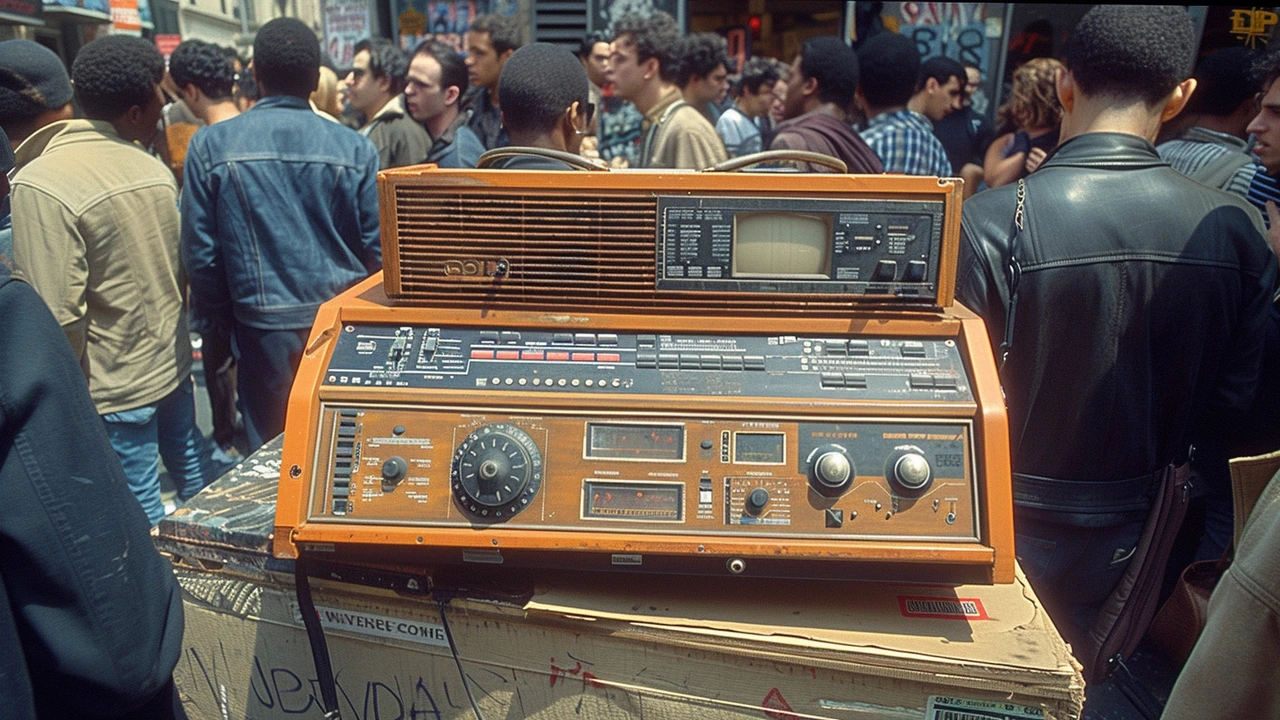The Stirring Connection: Hip-hop Music and Contemporary Art
You wouldn't think it, but sitting here in my cosy Brisbane home, chilled beverage in one hand, the distracted growls of Max, my Golden Retriever playing in the corner, I can't help but ponder over the profound influence hip-hop music has on contemporary art. It's like watching Sheldon, my turtle, methodically bending his tiny neck to devour a lettuce leaf. What on surface may look too slow, too meticulous, emerges as an engrossing spectacle, stirring you from within. That's exactly how the influence and impact creeps on us – subtly integrated in the fabric of colors, sounds, visuals, and textures, rather like the strokes of a maestro creating a masterpiece that is life.
Unexpected Edges: The Fusion of Art Forms
Sitting here, tapping my fingers to the melodious beats emanating from my speakers, I am enraptured by the incredible symbiosis between hip-hop music and contemporary art. You see, hip-hop isn’t simply a genre of music. It’s a culture, a movement that has left indelible imprints on multiple spheres including fashion, dance, literature and of course, the visual arts. Its powerful ethos creatively wraps itself around the syntax of our urban lives, influencing the way we visualize, dream, and express ourselves the same way Max gets everyone to throw him his ball with those adorably demanding woofs of his.
Hip-hop: The Palette of the Public Consciousness
The connectivity between hip-hop and contemporary art is somewhat similar to Sheldon's connection to his favourite corner of the garden. Just as Sheldon keeps returning to this corner, marking it with his characteristic trails, the essence of hip-hop continuously seeps into contemporary art, leaving its hallmark on its evolution. Moving beyond the veneer of gaudy jewellery and provocative lyrics, hip-hop highlights societal issues. It speaks of poverty, injustice, and violence and thus, becomes an unfiltered expression of reality - a quality richly mirrored in contemporary art.
Power of Portraits: Persons of Influence
How many times have you seen portraits of Tupac, Jay-Z, Notorious B.I.G, or N.W.A in online art circles or boutique exhibitions? These hip-hop artists became icons, voices for suppressed communities, and symbols of rebellion. Portraying them in our art, then, becomes a stunning homage to their influence and a powerful testament to the influence of hip-hop in our current culture. Just as Max loves being the center of my lens when I capture him in all his golden glory for my Instagram followers, these faces of hip-hop love being the center of the public consciousness, artists adoringly depict them in vibrant colours and rebellious strokes, effectively blending music, personality, and art.
Street Art and Graffiti: The Rhythm of the Walls
Just like Sheldon carves out fascinating trails on the mud, each graffiti artist carves out their stories on the sprawling urban canvases. Graffiti, undeniably, is one of the most impactful offsprings of the hip-hop culture. It is the visual equivalent of the inspirational beats and dynamic rhythms that we associate with hip-hop music. The energy, the explosiveness, the raw power of hip-hop are all brought to life in the murals, the tagging, and the street art that dot our cities. You walk the streets and you see tales of rebellion, of community, of identity, brilliantly sprawled across the walls, singing the tunes of the hip-hop ethos.
Reflections of Reality: Transcending the Aesthetic
At its core, hip-hop music, much like contemporary art, is an authentic reflection of reality. It transcends the aesthetic, delves deeper, and manifests as a potent catalyst of social change. It influences not only how artists paint or sculpt but what they choose to represent. Just like that one time I decided to photograph Sheldon instead of Max because I got captivated by the streamlined grace of his shell, artists too, influenced by hip-hop, have started giving voice to themes that are seldom explored, themes that are raw, real, and hard-hitting. In the end, the influence of hip-hop on contemporary art doesn’t connect just through colors, forms, or rhythms - it connects through shared narratives that continue to shape the world we live in.

